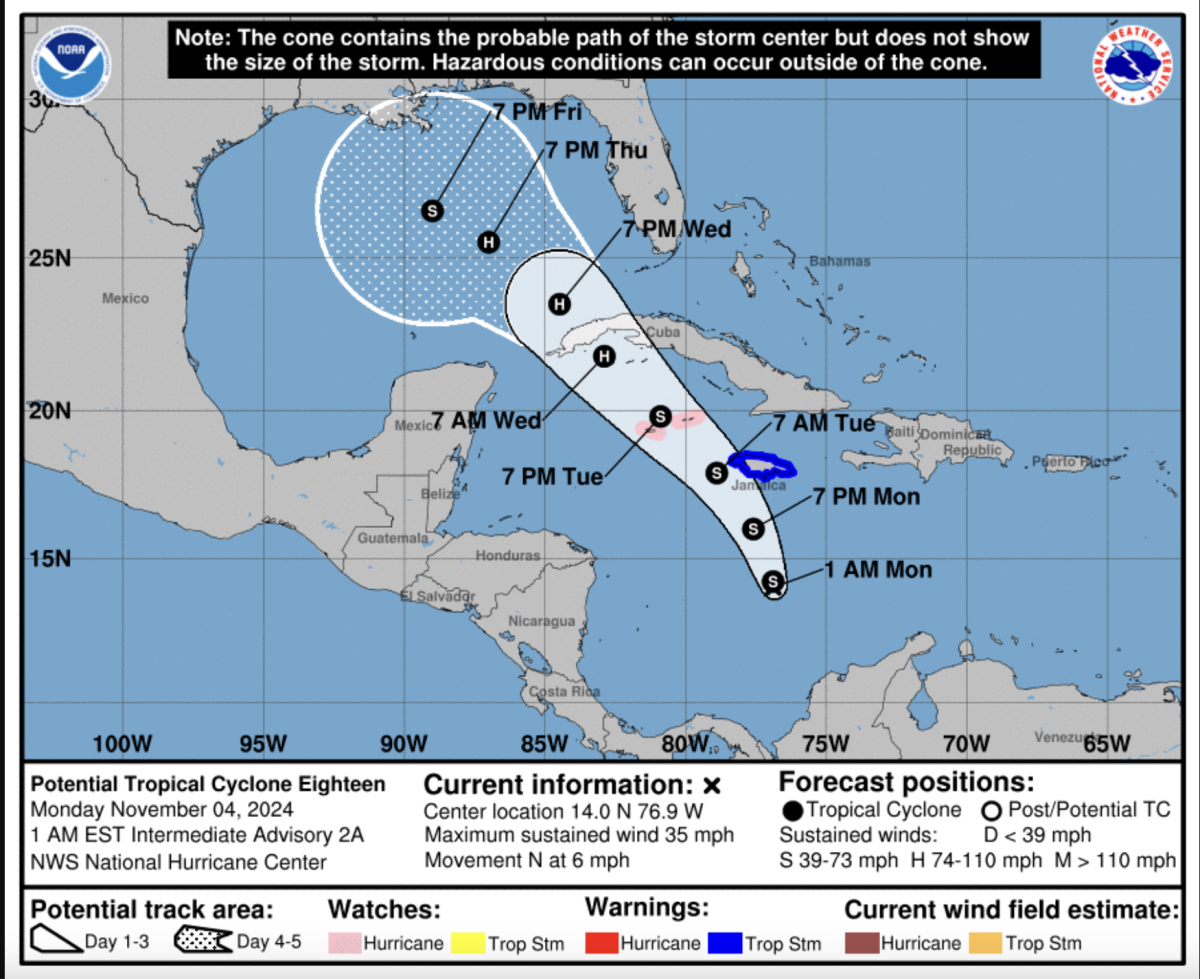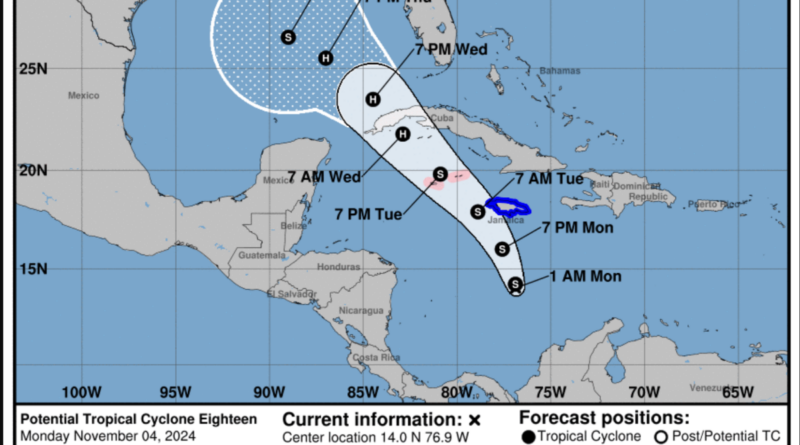Tropical Storm Rafael could develop today, heading toward Florida
The National Hurricane Center has forecast a possible storm heading toward Florida today, bringing heavy rain.
The typhoon is known as Tropical Storm 18 but will be named Storm Rafael if it becomes a tropical storm.
Newsweek has contacted the National Oceanic and Atmospheric Administration for comment.
What Is Tropical Storm Rafael’s Track?
In its advisory at 10 pm ET on Sunday, the National Hurricane Center reported that the current disturbance is expected to become a tropical storm on Monday night as it passes near Jamaica.
More from the Newsweek Vault: 5 Steps to Building an Emergency Fund Today

National Oceanic and Atmospheric Administration
The low pressure system is forecast to become a hurricane in the Northwestern Caribbean on Tuesday as it continues to batter the Cayman Islands and parts of Cuba.
Rafael is not expected to hit Florida directly, but the NSW forecast cone shows it should be in Key West around 7pm on Wednesday. The storm will continue to move—at a weak level—into the Gulf of Mexico, possibly making landfall in New Orleans, Louisiana, on Friday evening.
Although the winds may not be hurricane force when they hit the US, it is being warned that during the week the system may bring heavy rain to parts of the Western Caribbean, which may they spread to northern Florida and nearby areas of the American Southeast.
CBS NewsMeteorologist Nicolette Nolan told viewers “The models are inconsistent on where it will go next as it hits the Gulf, but the Gulf coasts of Texas, Louisiana, Mississippi, Alabama and Florida should be aware of impacts over the weekend.” .
More from the Newsweek Vault: Online Banking Vs. Traditional Banks: Learn the Differences
In its advisory, the National Hurricane Center also warned that interests in the Florida Keys should keep an eye on Rafael as hurricane and tropical storm watches may be needed across the Keys today.
In an X, formerly Twitter, post, the National Weather Service for Tampa Bay clarified what the storm could mean for Florida. The NWS said, “Yes [the storm] moves into the Gulf Midweek with increasing chances of rain and a 10%-20% chance of a tropical storm in coastal areas, though the storm’s core may stay offshore to prevent a severe threat of the soul.”
More from the Newsweek Vault: What is an Emergency Fund?
In another post, NWS Miami and South Florida warned that the “growing pressure” of Tropical Storm 18 may result in “a prolonged period of wind for South Florida with dangerous sea and coastal conditions he continues.”
Describing Rafael’s chances, AccuWeather Chief On-Air Meteorologist Bernie Rayno said:
He added: “The future path will be based on the movement of the jet stream dipping more than 1,000 kilometers over the US next week.”
“If the jet stream dip pushes farther east, it will tend to collect in the tropical zone and possibly drag across the southeastern Gulf of Mexico and South Florida.
But, if the jet stream is in the west, the tropical area may penetrate the western or central part of the Gulf of Mexico, where it may threaten western areas like Louisiana or Texas. and it decreases in southern Mexico,” Rayno said.
Although Florida should be affected by rain, the National Hurricane Center says most of the storm’s damage will occur in Jamaica and Cuba, where mudslides are possible.
When Does Hurricane Season Begin?
The Atlantic Hurricane Season runs from June 1 to November 30.
Unusually high activity levels at the end of the season due to high water temperatures are close to the Atlantic Basin record for this time of year.
Storms in November are not uncommon but not impossible. On record, only four hurricanes hit the US in the first month of the year.
The most recent is when Hurricane Nicole hit Florida in November 2022 as a category 1 storm.
#Tropical #Storm #Rafael #develop #today #heading #Florida
